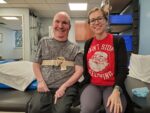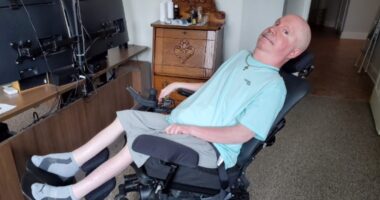New wheelchair brings changes, discomfort for SMA patient
Transferring to a new wheelchair can be difficult for SMA patients
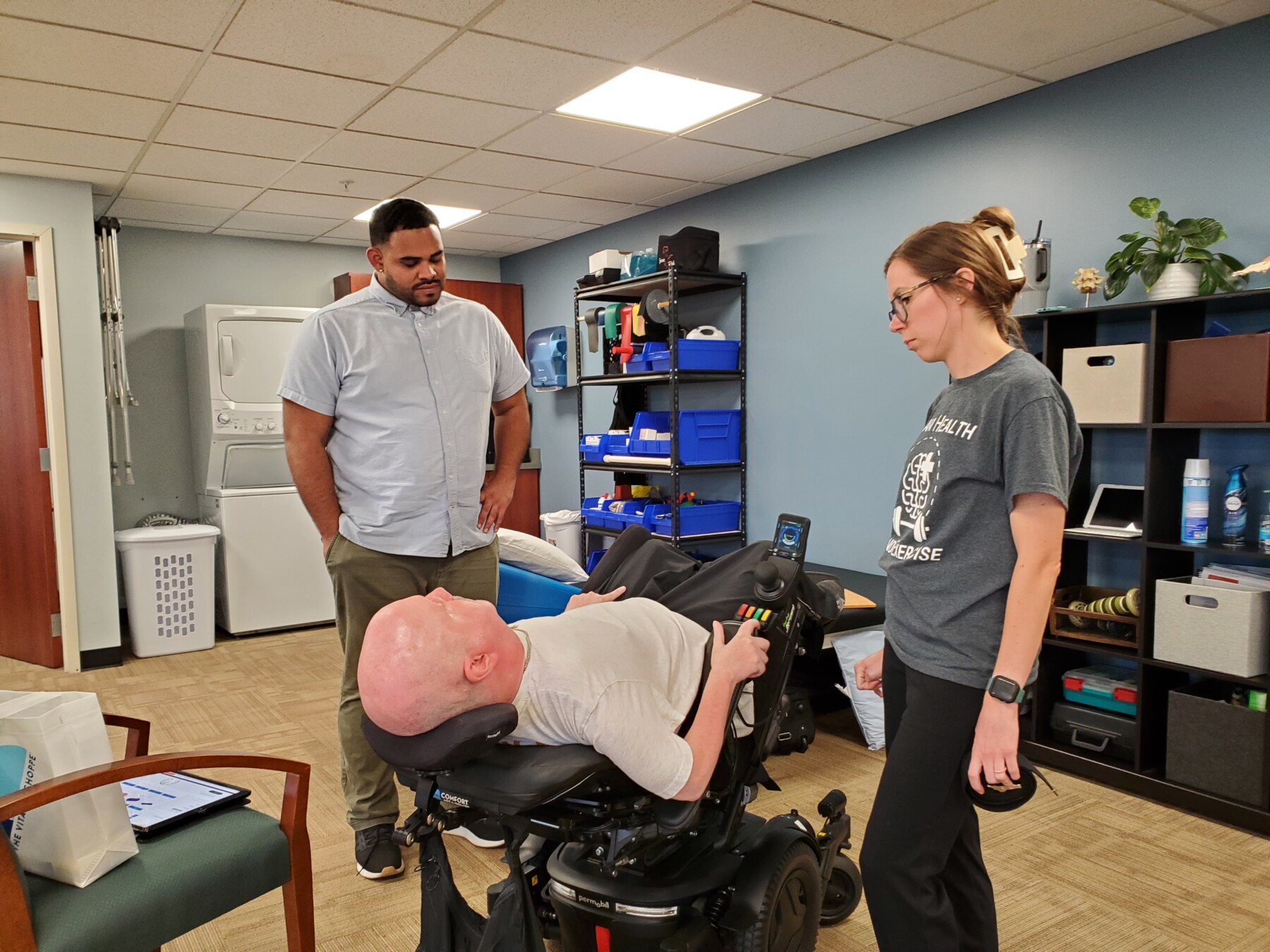
Michael shows his physical therapist and massage therapist the functions of his new wheelchair. (Photos courtesy of Michael Morale)
Michael, a spinal muscular atrophy (SMA) patient who I treat, has had his new wheelchair for about three years, although has had difficulty transitioning into it due to needed modifications. Unfortunately, the chair he had been using stopped working and he was forced to get into the new one. Now that he is finally in it, we have been able to assess how he sits and how he is able to navigate around.
While Michael was excited to get into his new chair, he had reservations about how comfortable he would be. This is a huge change for him. He uses his wheelchair all day, every day. It is the only way he is able to get around, so he must be comfortable and confident while using it.
Michael sat in his chair for about five hours for several days without any discomfort but, within a few days, began to feel sharp pain in his right hip. This is most likely due to the fact that the cushion he was used to is no longer being made so he had to settle for a different one. He has had this pain before and we have performed modalities and manipulations that have helped to reduce his pain and improve his comfort.
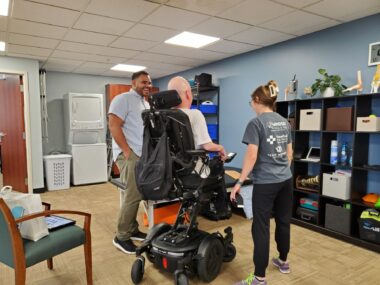
Michael demonstrates how he can raise his chair so that he can be at eye level with those around him. (Photo courtesy of Michael Morale)
At the beginning of his first treatment in his new wheelchair, Michael showed me all of the actions this wheelchair is able to perform. He is able to raise himself up to pull up to a bar top table and be at eye level with others, he can recline his chair back to an almost inverted position, as well as pull his feet rest up to elevate his feet.
With all of these new features and with the chair being different from his old one, we will be taking the wheelchair into some challenging spaces to ensure his comfort while navigating through public areas. We also assessed how he is sitting in his chair to ensure this wasn’t the reason he was experiencing more right hip pain.
With everything properly fitted and adjusted, we had to make some minor adjustments to get Michael transferred onto the table. Once he was transferred, we performed all of his regular stretches and lymphatic drainage exercises. Our massage therapist, who performs lymphatic drainage on his feet, commented that he was able to reduce the edema quicker and is attributing it to the constant pressure and input on his feet from his footrests. Because of the increased pressure on his feet daily with the footrests, his feet were more sensitive and tender throughout his activities requiring some modification and rest breaks.

Michael’s physical therapist Emily Jones checks to ensure his foot rests are at the correct level to provide adequate support.
Once he was stretched out, we rolled him onto his side to get to the bottom of his right hip pain. I was able to pinpoint the pain to the location where he normally has pain, which is along the right side of his sacrum down to his coccyx. With mobilizations of his sacrum and coccyx as well as soft tissue mobilizations around the area, Michael was able to transfer back into his chair and sit comfortably.
While Michael still is getting used to this new chair, we will spend time adapting and adjusting in whatever way we need to, so that we can improve his comfort and increase his confidence. This will take some time, and that is OK. We will use whatever time we need to continue to improve his independence and confidence throughout his daily activities.
Patient perspective
For the past 25 years, I’ve sat in the same wheelchair. While it may be easy for some to go from one wheelchair to another wheelchair, this process is still very difficult for me due to the amount of damage to my right hip. Even though I’ve had a new wheelchair for the past three years, sitting in this chair with the pain in my right hip made it impossible for me to get comfortable so that I could sit in a wheelchair for an extended period of time. Now that my old wheelchair is no longer working, I’m forced to get into this new wheelchair.
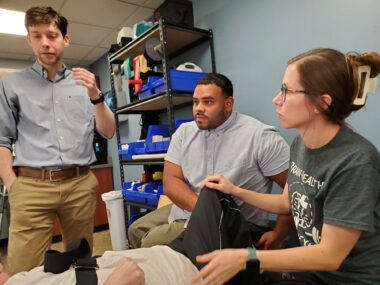
Ken Wheeler, PhD, owner and CEO of ClearCut Ortho, discusses some medical options that may help to relieve the pain Michael has in his right hip.
I’m extremely fortunate to have excellent physical therapists and massage therapists helping me through this process.
Even though I know this is going to be an uphill battle, having a good set of therapists around will definitely make this an easier process.
I’m definitely an advocate for physical therapy because, without all of the dedicated people around me, I’m not sure if I would be even remotely successful.
If you are a physical therapist, please understand the importance of what you do, along with the amount of help you bring to your individual patients.

